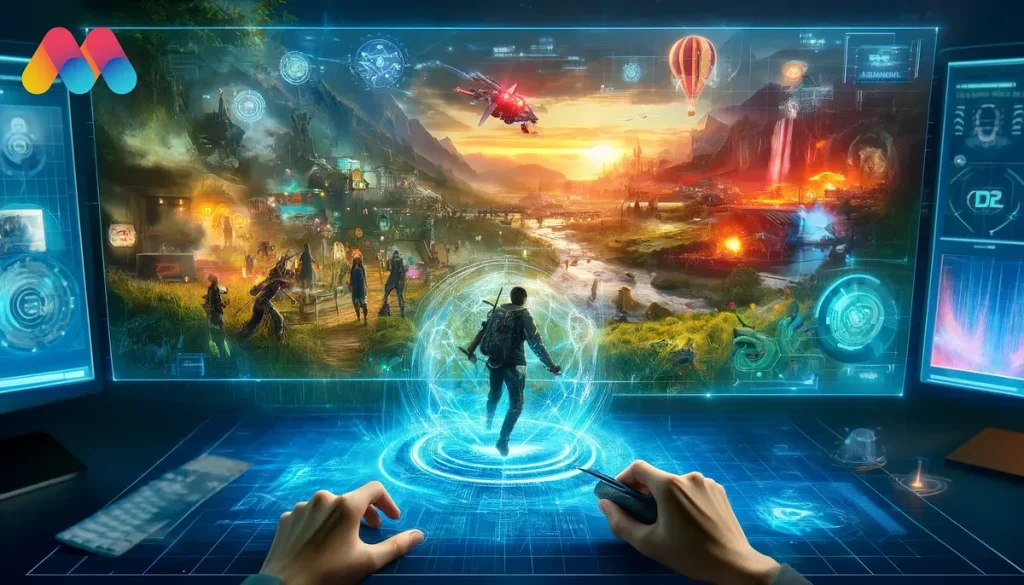Future of gaming is evolving at a rapid pace as cloud gaming and emerging frontiers reshape how we play, create, and share digital entertainment. This shift goes beyond faster downloads or shinier graphics, touching who has access and how experiences unfold in real time. Streaming and cloud-based architectures enable smoother play on a growing range of devices by moving heavy processing to data centers. Latency-aware networks and more flexible development pipelines help publishers reach global audiences with fewer hardware barriers. Looking ahead, cross-device experiences, richer collaboration, and new business models promise wider participation and deeper immersion.
To frame this transition through an alternative lens, think of an era of interactive entertainment where compute is distributed and experiences adapt to players. AI in gaming brings dynamic storytelling, adaptive difficulty, and smarter companions that learn with you. Cross-platform gaming ties together PC, console, and mobile ecosystems, enabling seamless progression and social play across devices. As innovations converge, the gaming landscape widens access while inviting new forms of collaboration and experimentation.
Frequently Asked Questions
In the Future of gaming, how does cloud gaming reshape access and performance for players?
Cloud gaming moves heavy computation to remote data centers, enabling AAA titles to run on devices that wouldn’t normally meet the requirements. Edge computing reduces latency, delivering smoother gameplay across devices and broadening access. Streaming services then empower rapid testing, portable builds, and global reach for creators while minimizing frequent hardware upgrades for players.
How will AI in gaming and cross-platform gaming redefine gameplay and development in the Future of gaming?
AI in gaming enables dynamic storytelling, adaptive difficulty, procedural content generation, and smarter matchmaking, resulting in more responsive and immersive experiences. It also supports faster development with automation for testing and QA, while cross-platform gaming and gaming streaming services create a shared ecosystem across PC, console, and mobile, enabling new business models and broader audiences.
| Theme | Key Points | Impacts / Benefits |
|---|---|---|
| Cloud Gaming reshapes access and performance | Enables AAA gaming on modest devices; reduces hardware upgrades; levels the field for indie developers | Lower hardware barriers; broader audience; faster publishing and testing |
| Technical foundation and user experience | Streaming tech, low latency, edge computing; robust CDNs deliver smoother gameplay across devices | Quicker, more responsive experiences; cross-device continuity; rapid creator workflows |
| AI in gaming reshapes gameplay design and development | Dynamic storytelling, adaptive difficulty, procedural content generation; smarter matchmaking; AI-driven NPCs that learn | More personalized experiences; faster development; AI handles complexity at scale |
| AI for players and interfaces | Tailored pacing, smarter tutorials, intuitive interfaces; real-time adaptation to players | Improved onboarding for newcomers; deeper engagement for veterans |
| New frontiers expanding possibilities beyond traditional models | Cross-platform ecosystems across PC, console, mobile, and wearables; streaming catalogs; new business models | Frictionless context switching; broader reach; diverse monetization options |
| Edge computing and latency challenges | Latency, reliability, bandwidth, and data privacy considerations; strategies include edge computing, private networks, standardized protocols; compression and adaptive streaming | Lower latency experiences; regional parity; ongoing tech development required |
| Economic and creative implications for developers and players | Cloud-based and AI-enhanced workflows reduce production timelines; shifts to subscription/streaming monetization; more frequent content updates | Lower entry barriers; more experimentation; diverse revenue models |
| Looking ahead at immersive and accessible experiences | Immersive AI-driven worlds, responsive physics, expressive animation; XR and cloud-enabled accessibility; adaptive controls and inclusive design | Wider audience; richer worlds; inclusive design |
| The human element in the future of gaming | People, communities, ethics, data privacy, and transparent monetization practices shape adoption | Sustainable ecosystem; trust and culture are as important as code and hardware |
Summary
Future of gaming is a landscape where cloud-powered streaming, AI-driven design, and new frontiers like edge computing reshape how stories are told and experiences are shared. This evolution expands access, enabling players on a wide range of devices to enjoy deeper, more personalized adventures without costly hardware. Developers gain faster pipelines, scalable testing, and new business models that emphasize ongoing value through updates and live events. As latency, privacy, and monetization questions are addressed, the culture of play—cooperation, creativity, and community—becomes as central as the code behind it. The most exciting aspect of the Future of gaming is not just what we play, but how we connect with others and imagine the next frontier of interactivity.

